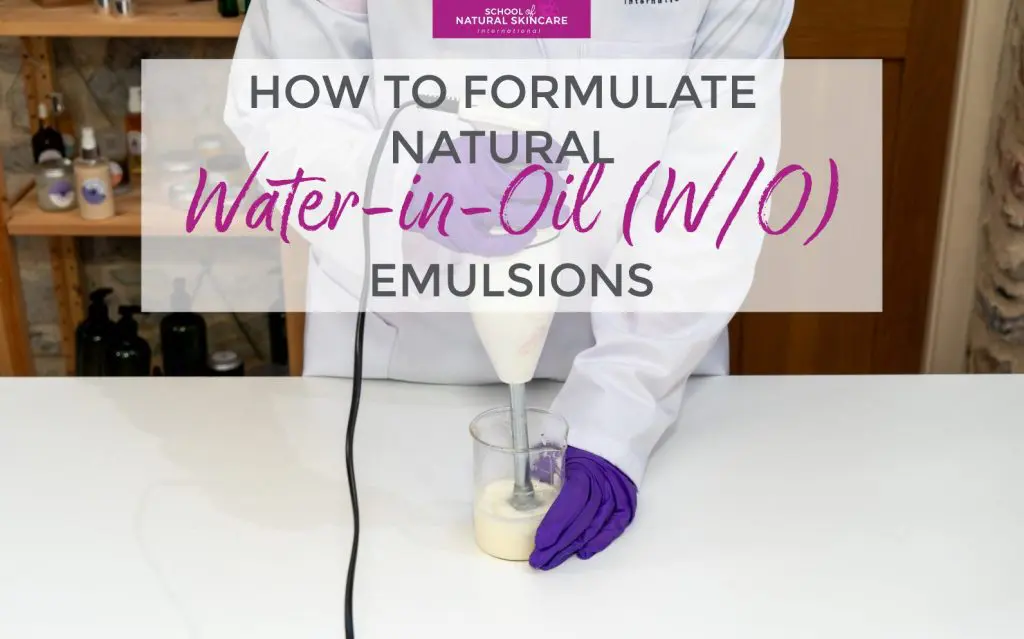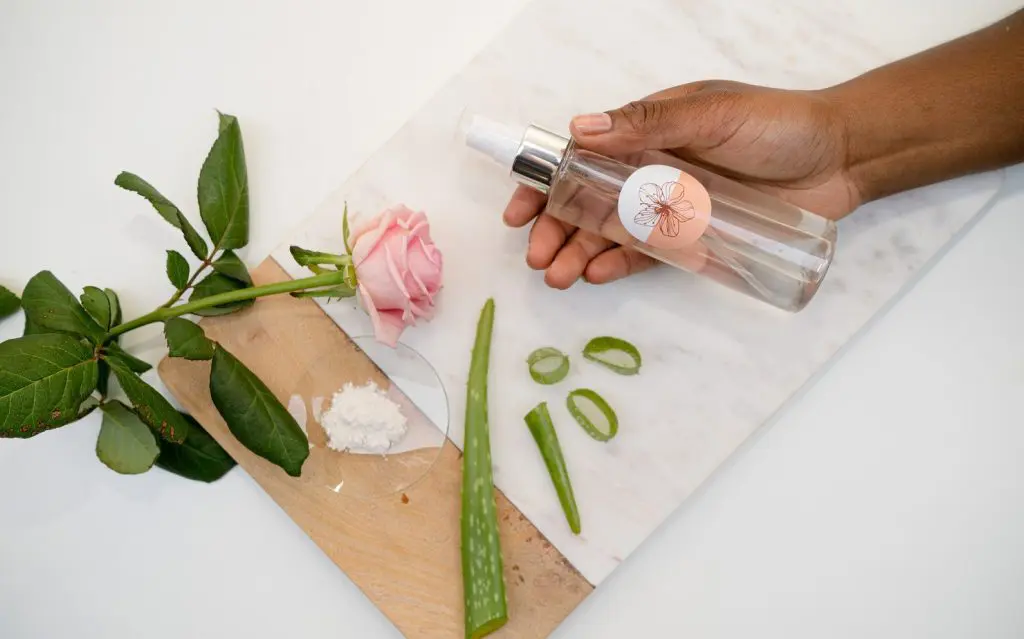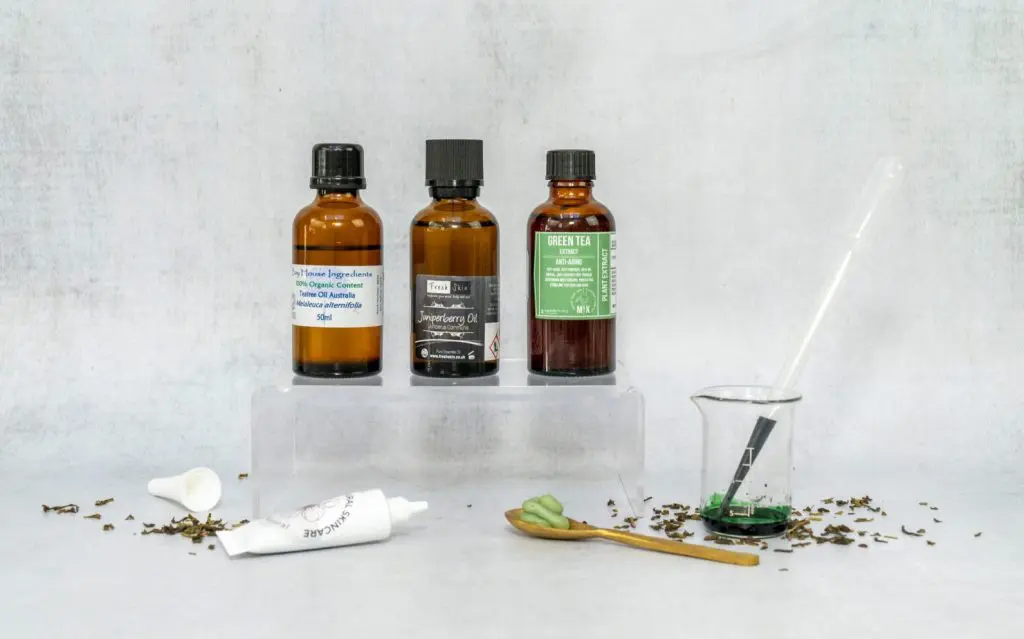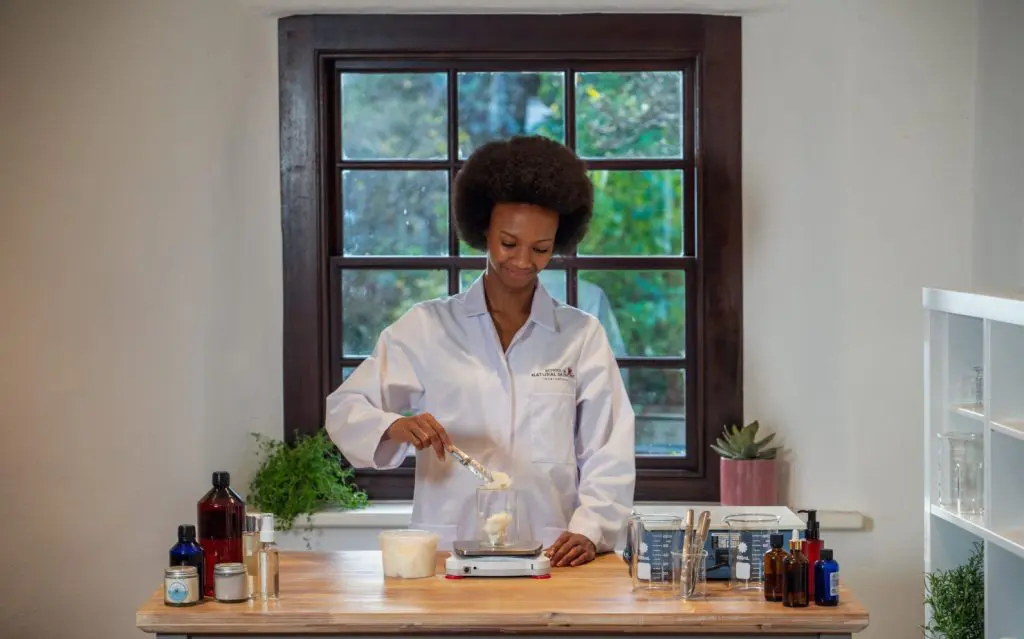If you’ve mastered making creams and lotions, it’s time to learn to formulate and make water-in-oil emulsions!
This rich, deeply moisturizing and iconic emulsion type will take your skincare formulation skills to the next level.
In this article, we’ll explore:
- What are water-in-oil (W/O) emulsions?
- Benefits of W/O emulsions.
- Examples of W/O emulsions on the market.
- How to formulate natural W/O emulsions.
- Expert training on formulating W/O emulsions.
What are water-in-oil (W/O) emulsions?
The majority of emulsions you see on the skincare market, such as body lotions, hand cream and facial moisturizers are oil-in-water (O/W) emulsions. In these emulsions, oil droplets are dispersed within a water phase.
The other main type of emulsion, though less common, is water-in-oil (W/O) emulsion, in which water droplets are dispersed within the oil phase.
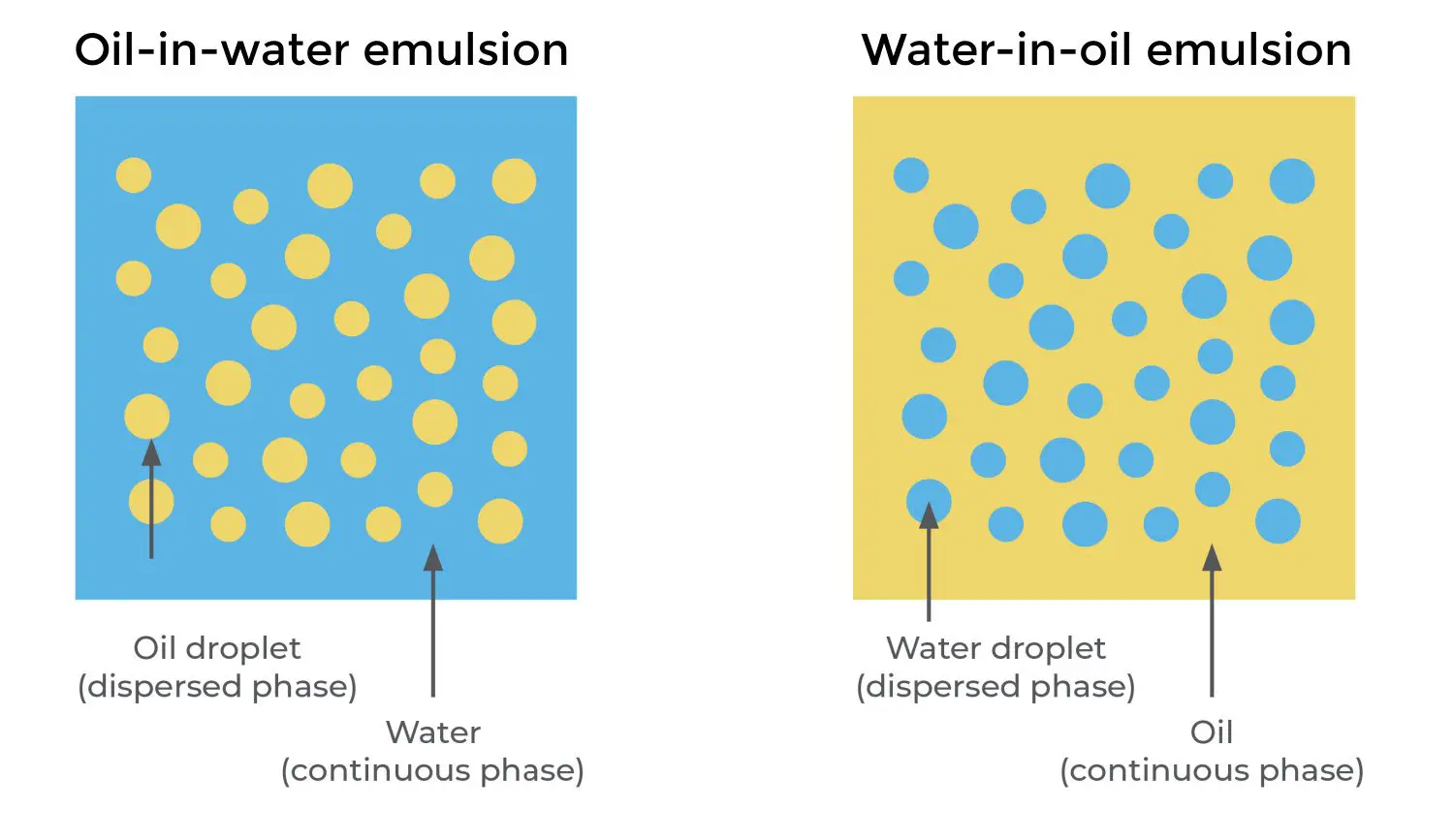
Water-in-oil emulsions are typically thicker, heavier creams that are more complex but are absolute heroes in the battle against very dry skin.
Water-in-oil emulsions create more occlusive and water-resistant products such as sunscreen, foundation, diaper cream and weather shielding cream. A classic cold cream cleanser is another example of a W/O emulsion.
For the first time, over in the Natural Cosmetic Formulation Club, the School of Natural Skincare is giving you the opportunity to learn the detailed theory of W/O emulsions and create exciting natural skincare products using new emulsifiers never included in our courses or membership before.
Using a new manufacturing method, you can open up your options and produce a wide range of unique, natural W/O emulsions that provide long-lasting, rich moisturization, expanding not only your natural formulating knowledge but also your cosmetic range.
Benefits of water-in-oil emulsions
Let’s explore some of the advantages and disadvantages of W/O emulsions.
The intensely moisturizing and hydrating properties of W/O emulsions have a much longer lasting effect on the skin than O/W emulsions, and while O/W products rub into the skin easily, W/O emulsions have a higher level of water resistance and provide an occlusive layer on the skin that helps decrease transepidermal water loss (TEWL), locking in that hydration.
| O/W emulsions | W/O emulsions | |
| Advantages | Provides instant moisture and hydration to the skin | Very moisturizing, rich and nourishing. Lasts a long time on the skin |
| Rubs into the skin easily | Higher level of water resistance | |
| Can produce a variety of textures – from lotions to creams | Occlusive on the skin, which helps decrease TEWL | |
| Can create effective barrier creams | ||
| Disadvantages | Hydrating and moisturizing effects may not last as long | Heavier feeling on the skin |
| Can be unstable | More difficult to stabilize than O/W emulsions | |
| Not as occlusive |
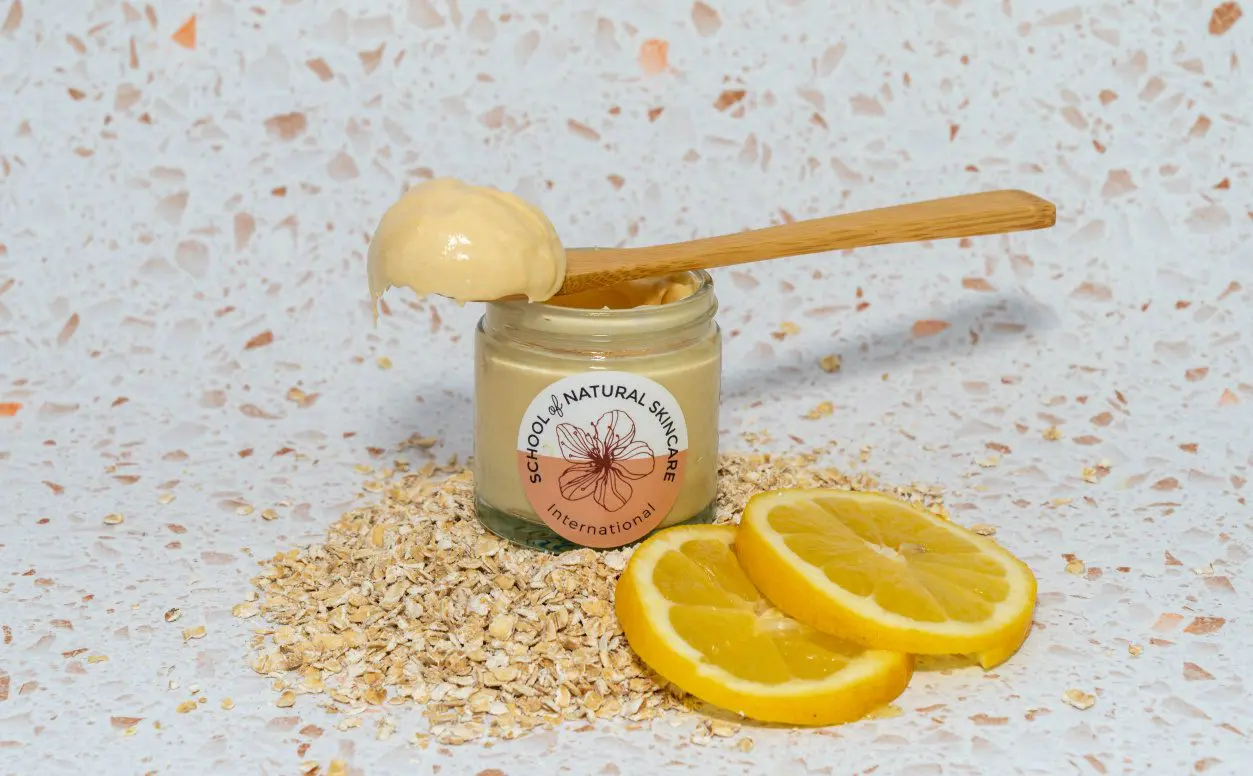
Examples of W/O emulsions on the market
To give you a better sense of what a water-in-oil emulsion is like, let’s look at some classic examples. The first two examples are not natural formulations (they contain mineral oil) whereas Weleda’s iconic Skin Food is a natural formulation.
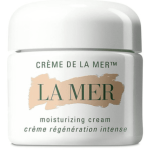
La Mer Crème de la Mer Moisturising Cream
“…this ultra-rich cream delivers soothing moisture, daily protection, and energized natural renewal. At first touch, sensitivities look soothed. Dryness seems to disappear. “
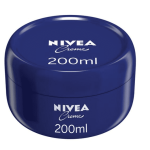
Nivea Creme
“The original dry skin cream for hands, body, and face intensively moisturises and soothes the skin leaving it soft and smooth”
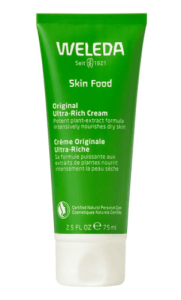
Weleda Skin Food
“The ultimate natural moisturiser for dry, rough skin everywhere.”
How to formulate natural water-in-oil emulsions
A basic knowledge of formulating emulsions is beneficial before you move on to create water-in-oil emulsions.
Here are some of the key points to bear in mind when formulating water-in-oil emulsions and some key differences between the emulsion types.
Emulsifiers
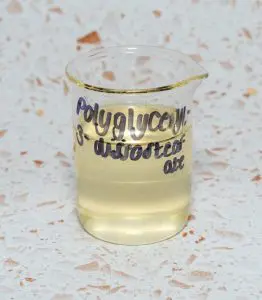
You must use a W/O emulsifier to create a W/O emulsion. Our Formulating Water-in-Oil (W/O) Emulsions class provides you with detailed information on nine natural water-in-oil emulsifiers, including usage instructions and supplier details.
Suitable co-emulsifiers are also important to include for maximum stability.
It is a common misconception that beeswax is an emulsifier for W/O emulsions. This is simply not the case. Beeswax can, however, be helpful in these formulations to improve stability as it thickens the oil phase of the emulsion.
Stabilizing W/O emulsions
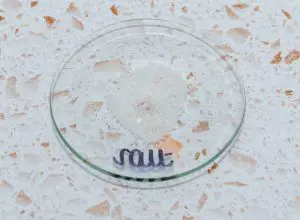
Stabilizing water-in-oil emulsions is the trickiest part of formulating this type of emulsion and a detailed understanding of which stabilizers to use and how to incorporate them into the formulation is essential.
The type of stabilizers required for W/O emulsions are different to those needed for O/W emulsions. In W/O emulsions, water-phase thickeners such as xanthan gum do not play a key role, since the water is not present as the continuous phase but as the dispersed phase.
For this reason, oil-phase gelling agents need to be used to improve the stability of W/O emulsions. The best stabilizers are salts of stearic acid and other oil gelling/thickening agents can also be used. W/O emulsions can also be stabilized by adding salt to the water phase. This can be regular table salt (sodium chloride), magnesium salts or zinc salts.
Using several stabilizers will give the best results.
Measuring and adjusting pH of W/O emulsions
pH is always measured in a water-based solution, as it only exists in water. As W/O emulsions have oil in the outer phase, dipping a pH meter into a finished W/O emulsion would only allow the electrode contact with oil, which would result in a pointless measurement as the oil phase does not have a pH.
For this reason, when making W/O emulsion, we measure and adjust the pH only in the water phase, before combining the phases into an emulsion.
Expert training on formulating W/O emulsions
Formulating Water-in-Oil (W/O) Emulsions is a comprehensive and unprecedented class that can be found exclusively in the Natural Cosmetic Formulation Club.
In this class, we cover:
- Emulsion theory.
- Similarities and differences between O/W and W/O emulsions.
- Formulation template for W/O emulsions to help you create your own unique formulations.
- Deep dive into natural W/O emulsifiers – examples, detailed usage instructions and suppliers.
- Examples of W/O emulsions on the market with detailed analysis of their ingredients.
- Formulation example: Weather Protection Cream.
- Formulation example: Nourishing Body Cream.
- Troubleshooting advice.
Practice your skills by following our two ready-to-use formulations for Weather Protection Cream and Nourishing Body Cream. Watch our useful step-by-step video to see the exact method for making a W/O emulsion. Then use our templates and detailed guidance to formulate your own!
Join the Club today
Check out our Natural Cosmetic Formulation Club to find out all about the Club and how to join.
Join today and exchange your first month’s credits for Formulating Water-in-Oil (W/O) Emulsions to get started right away. Already a member? You’ll find the class on your Classes dashboard.
With loads of exciting topics to discover, new classes added every month and a supportive community, we know you’ll love being a member!

